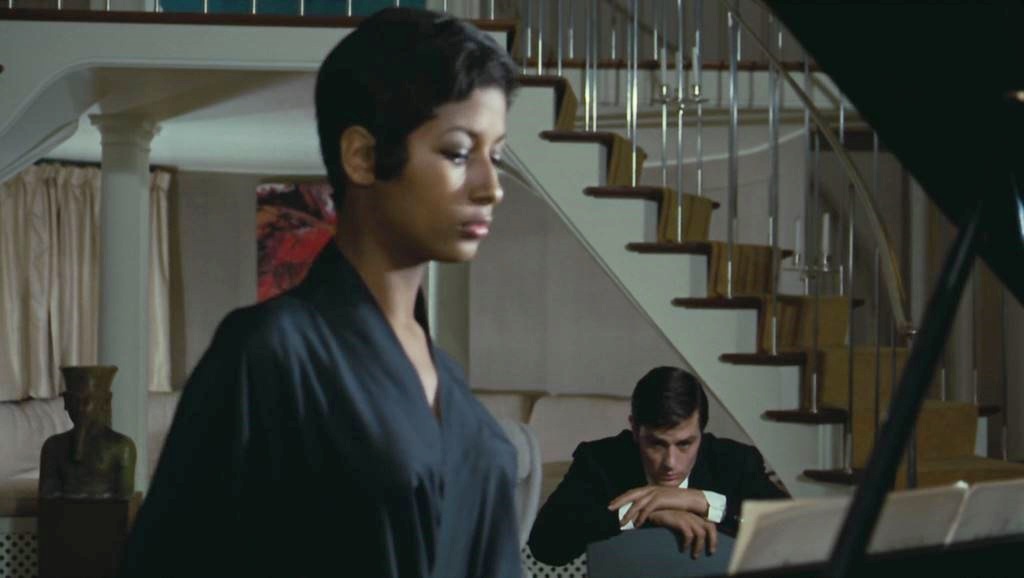.
Children of Paradise

Director: Marcel Carné
Screenwriter: Jacques Prévert
By Roderick Heath
Commonly regarded as one of the greatest films ever made, Les Enfants du Paradis is also one of those movies inseparable from the legends invested in it by history. The making of director Marcel Carné’s best-known work was an arduous saga that spanned over a year of the Nazi occupation of France in World War II. The production was troubled by blackouts, storm damage to sets, wartime resource shortages and seizures, ravenous extras, the collapse of the French-Italian coproduction backing the movie owing to war and its rescuing by Pathé, sudden changes in personnel, and various twists and turns of the war, including, finally, the D-Day landings. The huge cast and crew was a microcosm of the moment, riven with collaborators and fascist sympathisers whose presence was mandated by authorities, cheek by jowl with Resistance operatives given a perfect place to hide and wait. One major cast member, Robert Le Vigan, fled for German-occupied territory after being sentenced to death for collaboration by the Resistance ahead of the Allied advance, and all his scenes were reshot with Pierre Renoir. Lead actress Arlette-Leonie ‘Arletty’ Bathiat was tried for treason after having an affair with a German Luftwaffe officer. Set designer Alexandre Trauner and composer Joseph Kosma were Jewish and did their work on the film in hiding: Trauner, under an assumed name, lived with Carné and screenwriter Jacques Prévert whilst they wrote the script. Meanwhile the filmmakers hid away completed footage in their hopes of stretching out the shoot until the Liberation. Even the fights over how the movie would be screened were gruelling.

When the film finally had its premiere in March 1945, all agonies were rewarded when the movie proved an enormous hit, and a climactic product of the ironic boom French cinema had known during the Occupation, when local film product had no competition. Les Enfants du Paradis was often described as the French answer to Gone With The Wind – understandable to a degree, as both are lengthy historical tales depicting heroes whose lives are shaped by unrequited and misaligned love, but does neither film many favours. In terms of its immediate preoccupations in story and theme, Les Enfants du Paradis is something far more intimate than all the tumult of its making would suggest, even as it subtly redefines the idea of epic cinema, focusing on the entwined lives and passions of a handful of people and the art some of them create, whilst encompassing them within a vision of an epoch and its society. As detached as it seems superficially to be from the realities of the wartime moment, the psychic tenor of that epoch echoes through the film in the urgency of its statement of collective identity. Much like Michael Powell and Emeric Pressburger’s The Red Shoes (1948) a few years later, and a movie evidently influenced by it, Les Enfants du Paradis captured the mood of a moment groping its way out from the under the rubble and determined to celebrate and elevate the finer aspects of social identity and creativity, even whilst viewing such things as inseparable from a harsh and consuming world.

Carné and Prévert were already a winning team by the time they made Les Enfants du Paradis. Carné was the son of a Parisian furniture maker who had gravitated towards cinema in his twenties, starting as a film critic whilst also gaining experience as a cameraman under Jacques Feyder and an assistant to Jean Grémillon. Carné got his feature directing break when Feyder left to make a movie in England and handed over to his protégé a movie he’d been developing, Jenny (1936). Prévert was the film’s screenwriter: the Neuilly-sur-Seine-born author would later become beloved in France as a poet whose playful, lyrical verses became study fodder for generations of French schoolchildren. But Prévert had been associated early in his career with the Rue du Château group, part the surrealist movement of the 1920s, a member of a political agitprop theatre group, and got into making movies with the aim of producing works in support of the left-wing Front Populaire movement that burgeoned in France in the mid-1930s. He wrote Jean Renoir’s contribution to the Front Populaire-era cinema, The Crime of Monsieur Lange (1936). Carné’s third film, written by Prévert, Quai des Brumes (1937), became one of the most famous works of the nascent style soon called “poetic realism.” Carné’s follow-ups, Hotel du Nord (1937) and Le Jour se lève (1939), the latter also written by Prévert, codified the mystique of the poetic realist style, which also included the likes of Julien Duvivier’s Pepé le Moko (1937) and echoed on in Carol Reed’s post-war diptych Odd Man Out (1947) and The Third Man (1949).

Poetic realist movies bridged the stylistic impulses of Expressionist cinema and the later film noir movement with their emphasis on gritty evocations of environments and inky, shadow-riven visual palettes, and generally focused on people pushed to the fringe of society for various reasons, particularly criminals. But where film noir generally hewed to the rules of thriller genre convention, poetic realism was more character driven, sympathetic to its outsider protagonists but also steadily charting their paths to destruction and investing their transitory lives with a stylised glamour of intensity. Later the movement seemed more clearly the result of the brooding apprehension of the late 1930s, and poetic realism was already a dating concept by the time the war came: Grémillon’s Remorques (1941) provided the style’s incantatory coda, and Renoir’s The Rules of the Game (1939) announced a more limpid, humanistic approach. Les Enfants du Paradis also proved the highpoint of Carné’s career, one he never came close to regaining. The immediate follow-up he and Prévert made, Les Portes de la nuit (1946), was another expensive prestige movie that revisited the romantic fatalism of their pre-war work, but proved a concussive failure. Apart from one proper hit, Les Tricheurs (1958), the movies Carné produced through until the end of his career in the 1970s were generally met with critical brickbats and flaccid box office: as much as the New Wave crowd admired his best early films – François Truffaut commented he would give up his whole oeuvre to have made Les Enfants du Paradis – they were also mighty snooty about what they felt he became after.

Les Enfants du Paradis stands nonetheless as an example of perfection in narrative cinema, the overflowing richness of Prévert’s script, the careful artistry and dramatic attentiveness of Carné’s images, and the poise of its actors fusing so tightly they can’t be imagined distinctly. The story had roots in authentic history. The film’s eventual star, the actor and mime Jean-Louis Barrault, was interested in making a movie about two real French actors of the 1820s and ‘30s, the mime Baptiste Deburau and the tragedian Frédérick Lemaître, and floated the project to Carné. Carné mentioned it to Prévert who, despite his dislike of mime as an art form, became interested when he realised he could incorporate another actual personage of the era, the dandyish criminal Pierre Lacenaire. The central locale of the drama is the world they inhabited, the Boulevard du Temple, the theatrical heart of Paris at the time nicknamed “le Boulevard du Crime” because of the colossal number of crime-themed plays that showed there (yes, the popularity of tales about murder and theft as entertainment has always been vast). The fictional story Prévert came up with entwined the real and the imagined, the authentic and the performed, within shifting layers of artifice, beginning with the way the film raises a curtain on the unfolding action.

Barrault’s Baptiste Deburau, nominated as the film’s tragic hero, is the archetype of the dreamer artist, introduced staring off apparently into the void whilst his father, the leader of their family mime troupe, spruiks their performances on a stage outside the Théâtre des Funambules – Funambule translating as “tightrope,” implying the precarious evolution of a brand of popular performing from the age of the circus and street acrobatics towards the refined mystique of mime. The patriarch, Anselme (Étienne Decroux), derides his talentless son during his spiel and repeatedly swats him on the head, but deigns to leave him to entertain the crowd. A little down the way, in a fairground sideshow, Garance (Arletty) is a beautiful woman who provides one of the attractions, sitting in a tub of water naked in a still-life pose admiring herself in a mirror. Garance’s real name is Claire Reine, although she dislikes being called by it, as she maintains a veneer of self-invention matching her self-propelling nature, and rather than being an artist like two of her major paramours in the film, Garance is more the product of her own art. Tiring of her current, dubious way of making a living, Garance quits, and swiftly encounters three of the men who will define her life. The first is Lacenaire (Marcel Herrand), who officially works as a public scribe writing letters for the illiterate and untalented, but who likes to spend his spare time writing plays he doesn’t want performed, as well as being the head of a crime gang who specialise in robberies and, when required, killings. Garance often visits his shop to be amused by Lacenaire’s coolly cynical wit and disdain for any form of sentiment, and his refusal to act like most men and make a play for her because it would demean his efforts to remain impervious to external concerns. On the Boulevard Garance next encounters Frédérick Lemaitre (Claude Brasseur), who is at this point a foppish but jobless, indigent actor, but still an eager flirt. He strikes out with Garance, although they share an evident chemistry in their mutually teasing humour.

Shortly after, Garance pauses by the stage to listen to Anselme’s barking, whilst Lacenaire slyly relieves a wealthy man standing next to her of his watch. The man, realising he’s been robbed, accuses Garance, but when a gendarme tries to arrest her Baptiste suddenly announces he saw the whole thing and acts it out in mime fashion in a startling display of his unique physical dexterity and humour which entrances and tickles all watching and, most vitally, so clearly explains the events Garance is released. She tosses Baptiste a flower to show her thanks. Baptiste returns to the Théâtre des Funambules where Frédérick is also seeking a job, speaking with the frantic manager (Marcel Pérès), who tries to keep his chaotic workforce in line with constant fines, and is contending with the rivalry of the two family-led acting troupes sharing out roles in the Theatre, the Deburaus and the Barrignis. When the leader of the latter troupe, Scarpia Barrigni (Albert Rémy), hits Anselme too hard with a prop gun during a performance, the two troupes get into a colossal backstage brawl, before the Barriginis walk out en masse. Frédérick sees his chance, jumping in to play a lion in the pantomime, and Baptiste is pressganged into playing opposite him after the ticket seller testifies, to Anselme’s great surprise, about Baptiste’s way with a crowd. The performance saves the theatre from giving out a refund, and afterwards, having a drink together, Baptiste offers to get Frédérick a room in the affordable and lenient boarding house he lives in, the Great Post House, run by the rotund and good-natured Madame Hermine (Jane Marken).

Les Enfants du Paradis is a film officially divided in two parts, a move made in part to get around imposed limits on how long films could be during the Occupation, and also to please exhibitors wary of such a long movie. Carné and Prévert turned this to their purpose as the two halves of the film each depict a few, intense days in the lives of its characters six years apart. Both portions – Part I is designated “The Boulevard of Crime” whilst Part II is “The Man In White,” hinting at the shift from the macrocosm to the personal – begin with long comedic movements before shading steadily into more serious and complex matters as the characters make choices that seem practically incidental at first glance but eventually prove entirely life-shaping – even life-ending. Les Enfants du Paradis encompasses two major themes; the first, in obedience to everyone’s first notion of what a good French film should offer, is the way romantic passion is the basic meal of human existence, with the fascinating conceit of studying the way one woman is loved by four men, each in completely different ways. The other concern is a meditation on the nature and meaning of artistic creation – musings couched, in the film’s narrative, in terms of the period theatrical world, but encompassing the ideal of popular moviemaking. Early in Part I the entry to the world of the theatre is a droll survey of rivalries amongst the performers, and the way the performers and their audiences are indivisible. The film’s very title hints at this, as the “Paradis” refers to what in English was called “The Gods,” the high theatre stalls with cheap seating where working class patrons would crowd and give their judgments on proceedings from on high: thus the film’s title, usually translated as “Children of Paradise,” should then be rather “Children of the Gods.” Baptiste’s first display of his talent out on the street transmutes audience behaviour into art and gives it back.

Inside the theatre the denizens of the Gods offer their loud approval or disdain, delighting in the constant dialogue between their delight in and disdain for stock characters and action of the pantomimes. The sight of a mime in a tatty lion costume draws the sarcastic comment, “The king of the desert!” and a round of merry booing. The commentary continues until one audience member down in the good seats irritably stands up and cries out the immortal rebuke, “Quiet! We can’t hear the mime!” The intense pride and egotism of the actors is part of the texture of existence in the backstage, conflagrating between the two performing troupes: the moment Scarpia hits Anselme the manager knows there will be trouble, and both fighting me call in their supporters to join the struggle in an incidental, non-lethal edition of the kinds of vendettas they often act out on the stage. The manager’s daughter Nathalie (María Casares), who tends to play romantic ingénue parts in the various pantomimes, looks on with a trademark brand of intense knowing, musing on her particular talisman, being Baptiste, although she helps Frédérick talk to her distracted father. Frédérick’s entry into the Théâtre des Funambules is frustrating for an actor who delights in using the powers of his voice, but a role is a role is a role, as he quickly leaps into the discarded lion costume after the Barrignis bail, declaring his long experience in such parts: “Gulf of Lions! Richard the Lionheart! Pygmalion!”

Carné worked with Decroux to develop the film’s mime sequences, armed with Barrault, who presence is invaluable to the film as a performer who could handle both the straight dramatic acting and the mime work. Baptiste’s first display of his rarefied genius in saving Garance from the cop is uniquely clever and efficient, not simply depicting how Baptiste and Garance’s fateful bond is formed, but in establishing Baptiste’s penchant for converting the raw stuff of life he beholds into his art, reflecting back the petty everyday actions and human types of the boulevard he surveys via a succession of ingenious impersonations and finding the stuff of universal appeal in the seemingly sordid and familiar. Later, the pantomimes Baptiste creates and enacts extend this habit but also work it into narratives and miniature mythologies, creating tales that offer his take on the basic commedia dell’arte character of Pierrot as a projection of his essential self, one that resonates with his audience in a profound manner, in all his displays of lovestruck clumsiness and hapless pathos. Barrault’s performance in the film has often been compared to Charlie Chaplin. Nor does it seem coincidental, as the movie’s concept of Baptiste turns him into an analogue of Chaplin, cinema’s first true superstar, the man who connected with an entire world through cinematic images and his capacity to personify a particular, universally appealing type. Moreover the film teases out the way the film world is built upon a tradition stretching back much further.

The actual Baptiste isn’t nearly as naïvely ethereal as his onstage character, but his tendency to wistful idealism is acute and, as he soon discovers, close to self-destructive. Baptiste likes to wander the city streets, storing up observations and human types in his mental arsenal. After helping Frédérick find lodgings, Baptiste falls in with a blind beggar, Silk Thread (Gaston Modot), who of course proves to not be blind at all as he leads Baptiste into The Redbreast, a tavern he frequents and shows off his talents as a keen-eyed fence (“Out there I’m blind, a hopeless case, blind as a bat,” he comments, “In here I’m healed, a miracle!”), much to Baptiste’s initial surprise and then wise absence of comment. Silk Thread explains the source of the tavern’s name, a pun referring to the last owner who got his throat cut by Lacenaire, who turns up in the company of chief henchman Avril (Fabien Lors) and other confederates, as well as Garance. Baptiste is rapt to see Garance again, and with Garance quickly tiring of Lacenaire’s peculiar mix of performed diffidence and possessiveness, he swoops in and asks her to dance. She accepts, but Avril decides to teach Baptiste a lesson on his boss’s careless behalf, grabbing the mime and throwing him through a window. Baptiste emerges unscathed thanks to his great physical wit, and earns a roar from the tavern crowd by re-entering brushing himself down as if it’s all been a part of one of his performances, before confronting Avril and delivering a boot to the goon’s chest, flooring him and leaving him utterly without recourse.

As with the scenes in the theatre, the sequence in The Redbreast strives to evoke the collective memory of Paris with a churning mix of tartly observed behaviour and nostalgia, recreating a culture long gone but still anatomically connected to its modern manifestations. It’s a place where the poor, a big word encompassing everyone from the worker to the beggar to the prostitute to the criminal, could congregate and dance to a beat pounded out artlessly but with noisy vigour by a drummer with a tinnily tooting band, in a neutral zone beyond the eye of the law and guardians of morality where all tastes and appetites could be sated. Baptiste’s unexpected display of prowess as a fighter – “I had a rough childhood. I learned how to defend myself.” – signals he’s far from being the pansy pushover he might be taken for, even as he decries any suggestion he’s a tough guy. Garance is delighted, and her and Garance’s bond deepens as they wander the Ménilmontant streets musing on the affinity created by their different brands of alienation, Baptiste as a distracted and introspective child others wanted to beat sense into, Garance as a girl forced to grow up fast after her father left and her mother died. They are, at once, perfect exemplary types in their little world, but also isolate by-products, floating within that world musing on their private wounds and pleasures, and the qualities that mark them are at once burdens and blessings, as Garance’s beauty and Baptiste’s talent mean neither can simply be part of a crowd.

This meditation on the way formative experiences create adult personas has already been touched on with Lacenaire, and his bitter recollections of a childhood spent weathering people trying to humiliate him on one hand and overburden his intelligence with useless learning on the other, producing a peculiar kind of social and intellectual rebel who turns his considerable guile instead to acts of antisocial intent. Baptiste is the character who has best retained his childlike self, but the price he pays for this is being tantalised by semi-illusory things that cannot be possessed. When Garance confesses to being jobless and without any clear recourse, Baptiste tells her he can get her work on the stage, despite her lack of proper performing experience, which, as Baptiste knows, has never stopped anyone good-looking from finding acting work before. When he and Garance return to the boarding house with Baptiste, plainly eager to spend the night with him, but Baptiste demurs from the force of his perfect ardour: “I want you to love me the way I love you!” he declares before running out. Frédérick, in his adjoining room, sees Garance, and swiftly and not at all idealistically takes Baptiste’s place in Garance’s bed. After a diplomatic fade-out the narrative picks up a few months later: Baptiste has made good on his promise to put Garance on stage, if in a role that reproduces her sideshow part as the immobile and remote personification of Beauty, this time as a statue standing on a plinth in a park, a figure so entrancing that Baptiste in his Pierrot character tries in his pathetic way to charm her to life, Pygmalion-style.

Baptiste is chased off by a fearsome representative of civic power, impersonated by his father in old soldier garb, and instead the field is left clear for Frédérick, in Harlequin guise, to prance out and strum a guitar and with his more facile charm succeed in coaxing Beauty down, and take off with the lothario for a riparian adventure. Baptiste’s heartbroken character decides to kill himself, plucking up a discarded rope to hang himself from a tree, only for a small girl to come up and ask for the rope, using it as a jump-rope, whilst Baptiste is distracted by Nathalie in the role of a pretty young laundress who then asks to use the rope as to hang a load of washing on. Baptiste’s pantomime, which is swiftly making him a major star as both a showcase of his performing brilliance and as a creative artist capable of hitting and hooking the audience where it lives, turns his personal experience into art, the specific becoming the universal, played out through the archetypes of the stage tradition. Only Nathalie, as Baptiste’s greatest fan as well as adoring would-be wife, quite comprehends the way he’s challenging the separation of performance and reality in a peculiarly self-crucifying way. When she sees Baptiste gripped by a convulsion of feeling when watching Frédérick and Garance together, it sparks her to cry out on stage, more overtly violating the art/life barrier. The rupture quickly heals as Nathalie resumes the performance and her father announces her fine but reduces it out of paternal feeling. Backstage, the manager and Anselme crow over Baptiste’s emergence as a fully-fledged star, with the elder Delburau now eager to celebrate Baptiste’s prodigiousness alongside his own. Baptiste comments sourly on the beatings his father gave him to encourage his development, recalling his father’s old catechism of “A kick in the ass can make the whole world laugh.” Whereupon Anselme rhapsodises on the manifold varieties of comic kicks in the rear, part of the fading art he regards himself as gatekeeper and exponent for, whilst sadly musing that “Novelty is as old as the hills.”

The lament over endangered traditions and contemplations of chains of cultural continuity is more than incidental, but deeply wound into the form and concerns of Les Enfants du Paradis. Commentary on the film over the years has noted that it’s a deliberately old-fashioned piece of storytelling, but it’s one that exemplifies tendencies in the cinematic ideals of its era whilst also challenging them, unfolding in a succession of long, nuanced, dialogue-heavy sequences, mating the cinematic, the theatrical, and the literary with rarefied ease, and making plenty of room for performance within performance. Looking more closely, it’s actually a work that straddles cultural ages. On the one hand it harkens back to the grand old days of Balzac, Dumas, De Maupassant, and Stendhal, and other French Realist writers who transmuted their panoramic knowledge of the social landscape through scalpel-sharp sketches of life, love, and death, as well as the bygone theatre the film reconstructs and transmits. But story fits into the 1940s fashion of romantic melodrama with a touch of a proto-soap opera in the emphasis on the interconnected love lives of a few talented people. Carné’s direction abandons the viscous intensity of the 1930s poetic realist style, adopting a softer visual palette, but the aesthetic is as pure a channelling of the ideals inherent in the poetic realist mode as can be imagined, oscillating between the poles inherent in the name, from the intricately detailed realism of the Boulevard du Crime set to the stylised poeticism of the nocturnal surveys of a model-work Ménilmontant and a studio set laneway where Baptiste and Frédérick share a drink, and, in between, the enveloping mise-en-scene of settings like Garance’s changing room, reminiscent not just of Renoir but stylists like Erich Von Stroheim and Max Ophüls.

At the same time, the urges of neorealism were starting to emerge, and those impulses are also woven into the attempts to create a self-sufficient little world on the film’s expansive sets. The sprawling evocation of different ages fed into the overall project of cultural resistance the filmmakers set out to fashion under the guise of historical fancy. Les Enfants du Paradis is rather bolder than it seems at first glance in this regard. The film’s sense of humour and interplay of various levels and types of performance connect with the realm of the post-modern and the metatextual, intellectual ideas just starting to emerge when the film was released. The theatrical setting is naturally tempting as a springboard for such notions. Baptiste’s use of the basic archetypes of his theatrical experience as vehicles to refine and filter personal art offsets the way the filmmakers uses both actual historical personages and melodrama conventions. But the film also mischievously breaks them down, as in the way both Lacenaire and his henchman Avril are presented as a duo who don’t conform to any stereotypes of the underworld, the crime lord who’s a dandy aesthete and his chief enforcer who is bashful before artists he admires and takes to eating an ice cream sundae to calm himself after a stressful escapade. One of the film’s funniest sequences, kicking off the second part, is based on the true incident that made Lemaitre a star: he and the rest of the cast of a play that got booed the first night decided to send it up on the second and found they had a hit, The Producers-style. Les Enfants du Paradis runs with this to evoke much that had happened and would happen to dramatic.

Frédérick, by this point a major star but one who revels in spending more than he earns, is caught in a contract with a trio of pompous amateur playwrights (Auguste Bovério, Paul Demange, and Jean Diéner) who have written a cliché crime drama, Les Auberges des Adrets, and thrown around money to get it produced. Frédérick has the role of a doomed brigand, but the authors even object to his attempt to dress the part in ragged clothes and eye-patch as beneath their dignity. Frédérick, true to his legal and professional obligations, goes ahead with the play, but sabotages it on opening night by turning it into a deconstructive lampoon. Frédérick shatters the fourth wall and addresses the audience, forces the other actors to try and work around his improvisations, answers to his own name rather than his character’s, and finally delivers a howling dying monologue denouncing the play’s authors as the true criminals. Where the film turns Baptiste’s performances into studies of the relationship of personality and experience to the creation of art, Frédérick invents deconstructive satire as a different version of the same thing, asserting his creative personality over mangy material, making capital out of the breakdown of kind of shared meaning found in specified genres when they’re demeaned or wrapped in cliché to the point of irrelevance. Easy to see Prévert nodding to his surrealist days, but the meta play threads through Les Enfants du Paradis as a whole, as life and art entangle and comment upon each-other in unstable ways. In any event Frédérick’s sabotage proves a smash with the audience, but so infuriates and appals the writers they challenge Frédérick to a duel at dawn.

The first part of the film resolves when Garance, quickly tiring of Frédérick playing the facetiously buoyant lover (“Let me know when you’re finished,” she drawls as she treads tired and aching to her dressing room whilst he regales her with fanciful pet names), is approached by Comte Édouard de Montray (Louis Salou), a wealthy and urbane aristocrat who’s been drawn to the Theatre des Funambles as Baptiste has finally made it respectable and also by the swift-spreading word of Garance’s beauty on the stage. The Comte offers Garance an offer of his protection, a coded invitation to become his mistress, and gives her his card. Garance isn’t too eager to take up his offer, noting of his promise to change her life, “So my life means nothing?”, and knowing the trap of obligation and expectation she might be stepping into. But Lacenaire’s habit of getting her in hot water by exploiting her presence continues as he robs a bank courier, waiting for him in her apartment after telling Madame Hermine he’s a friend of hers. The police immediately assume Garance was complicit, and she’s grilled by a confident if artless detective (Paul Frankeur). Just as he’s about to arrest her, Garance produces De Montray’s card and tells the detective to contact the Comte, barely able to suppress her delight and pride in so deftly cutting the usually unstoppable hounds of authority off at the ankles. But it’s a triumph that proves Faustian. In the second part, commencing some five or six years later, Garance has been experiencing the consequences of her coup, as she’s been living with De Montray, much of the time spent outside of France.

In the meantime Baptiste has married Nathalie and had a son with her whilst achieving ever-greater success. Frédérick has also become a major star in the realm he prefers in the booming thespian climes of the Grand Theatre. After destroying Les Auberges des Adrets and accepting the authors’ demand for a duel, Frédérick carelessly retreats to his dressing room where he finds Lacenaire and Avril waiting for him, Lacenaire making a demand for cash from the actor as a pretext to kill the actor, as Frédérick’s successful seduction of Garance is still niggling at the gangster’s pride. But Frédérick, much to the criminals’ surprise, gives them a wad of cash and invites them to dine with him. By dawn all three are great pals and drunk as skunks, climbing out of Frédérick’s carriage to attend the duel. The actual duel is not shown, and the result is at first suggested to be tragic as Carné fades to the sight of a poster for Les Auberges Des Adrets now marked as cancelled – only for Carné to reveal Frédérick surveying the posters with his arm in a sling and a grin on his lips. Instead he takes the opportunity to go and see Baptiste perform, and because of a shortage of seats the usher puts him a box with a mysterious society woman who comes to watch Baptiste’s show, Chand d’Habits, every night: of course, the woman is Garance, now draped in finery and jewels, but cherishing her foiled love for Baptiste as a happy memory in what Lacenaire later calls her gilded cage.

The main characters all have a symbolic aspect to them although they’re blessed with carefully inscribed psychologies. Garance could almost be France itself, her long sojourn in Britain with the Comte a representation of the age of suborning and exile, just as the Comte embodies a superficially refined but actually thuggish upper class that associate with boors and barbarians of other stripes. The four main male characters all revolve around Garance, and each loves her in a specific way but with aspects of the others bleeding in – carnal, spiritual, possessive, selfless. Carné’s queerness is certainly invested in the film in its acknowledgement of passions both furtive and overriding of social mores and as spurs to the most feverishly sublimated creativity. Les Enfants du Paradis’ status as a French film of its era is plain enough in its relative frankness about sexuality and lack of overt moralising about the behaviour of its characters. Garance’s sexual availability isn’t an issue for her and she doesn’t see why it should be for anyone else – it is, rather, her naturally gifted bounty she bestows how she sees fit. That she’s introduced as a static embodiment of beauty abstracted and lost in its own narcissistic bubble, in her fairground act, reproducing a common sexist figuration portraying the attractive and fecund woman as so self-sufficient in those things existence scarcely needs reference outside of them, reacting only to sensual stimuli. Garance’s refusal to behave in such terms is swiftly signalled as she quits and seeks some other path, gravitating at first to Lacenaire who acts as a virtual asexual but still feels some kind of proprietary interest in Garance. Baptiste’s pantomime role for her seems to recreate her first job only to subvert it, but also hinting at a level of channelled scorn for how easily she gives in to the right lothario, in this case Frédérick, envisioned in the mime as the embodiment of the glib and hedonistic.

But “Jealousy belongs to all,” as Frédérick puts it late in the movie. The usually happy-go-lucky Frédérick has finally discovered the emotion thanks to beholding the torch Garance still carries for Baptiste, an emotional discovery Frédérick is happy to receive despite its sting as it finally gives him the key to playing his favourite Shakespeare character, Othello. Throughout the film, aptly for a film preoccupied by actors and acting, are littered memorable moments of physical expression and gesture that capture some essence of a person – Baptiste furiously slashing at the huge bouquet of flowers the Comte had bought for Garance as an expression of his self-castigating anger and frustration; Frédérick popping the cork on a bottle of champagne to pour out for Lacenaire and Avril, contents spuming out like a festive ribbon illustrating his liberality; the careful diction Garance suddenly adopts as she warns off the police trying to arrest her before plucking out the Comte’s card and handing it over, describing herself as a “fragile – objet d’art” to be handled with great care; Lacenaire drawing back a curtain to reveal Baptiste and Garance embracing as a similar coup of theatrical flourish. Some of this finite feel for the meaning of words and gestures is shared by figures in the drama, particularly Nathalie, who reacts with alarm when she hears the way Baptiste responds to mention of Garance, and her recognition of his pain on stage that makes her break character and convention, itself an expression of the depth of Nathalie’s feeling for Baptiste which contains a discomforting degree of maternal care rather than a lover’s passion.

And where Baptiste’s yearning for Garance is inseparable from his creative being, a light that draws on towards unknown and reckless ends, Nathalie’s kind is domestic, concrete, authentic but, whilst in accepting limitation and even debasement, nonetheless is exultant, triumphant, knowing; fully aware Baptiste doesn’t love her in the same way he does Garance, she will take him in any degree she can. Nathalie is arguably the film’s most pitiful figure precisely because of this assurance which is finally, harshly shown up in the face of a passion that’s hardly rational. Casares is marvellous in her debut film role: for her second Robert Bresson cast her in his Les Dames du Bois de Boulogne (1945), as if trying to earn her a measure of payback by giving her the role of a spurned mistress plotting an ice-cold revenge. In any event, Nathalie, having gotten wind of Garance’s return, sends her and Baptiste’s young son (Jean-Pierre Belmon) to her box to recite her memorised message that amounts to a plea to leave them to their happiness. Baptiste, hearing from Frédérick about Garance’s return, reproduces Nathalie’s fateful onstage lapse himself, this time dashing off during a performance to chase down Garance in her box only to find she’s obeyed the plea and left. In a fretful depression, Baptiste flees his home and returns to his old room at Madame Hermine’s, where Nathalie still keeps an eye on him. Garance meanwhile returns to the De Montray’s townhouse, where she encounters Lacenaire, having gotten wind she’s back and visiting with his usual sardonic metre, and he in turn swaps superficially jaunty but covertly threatening words with the Comte.

The most prominent supporting character in the movie is Jericho (Pierre Renoir), a ragman, peddlar, and fence who sells clothes to the theatres to use as costumes, usually reciting the litany of names he’s been given or has just made up to suit himself regarding his manifold habits and tempers: his main title of Jericho stems from his announcing his arrival with a small trumpet. Jericho has a tendency to insinuate himself into situations, a habit Lacenaire eventually takes exception to, telling the ragman he had a dream that suggested he might be a police informant. This might have been incorporated as a nod to Le Vigan, who had played the role before running off and being replaced with Renoir, but the character’s role as a carefully distanced jab at informants is deliberate. Jericho’s presence is deeply disquieting to Baptiste for another reason, as Jericho likes to see himself as a different kind of author, one who plays matchmaker interested in ensuring Nathalie, to whom he feels a quasi-paternal feeling, weds Baptiste, and then keeping a watch on Baptiste to make sure he keeps to the straight and narrow. Baptiste’s response is a deep loathing and antipathy for Jericho, which he later channels by casting his father as an obvious simulacrum of Jericho – thus uniting two different kinds of father figure, both of whom he resents and harbours dark feeling towards – in Chand d’Habits. Baptiste in his Pierrot guise, on a desperate quest to get into a ritzy ball in pursuit of the woman he loves, doesn’t have the money to pay the ragman for some finery, and so slays him – Baptiste expressing the sullen rage he still feels at Garance being stolen away and all his desperation, whilst killing off the avatar of what goads him. Baptiste reveals himself in crucial ways but also amplifies his art to new levels, not merely making the audience empathise with the lovelorn clown he enacts but dragging them on with into realms of deception and murder with sympathy undimmed.
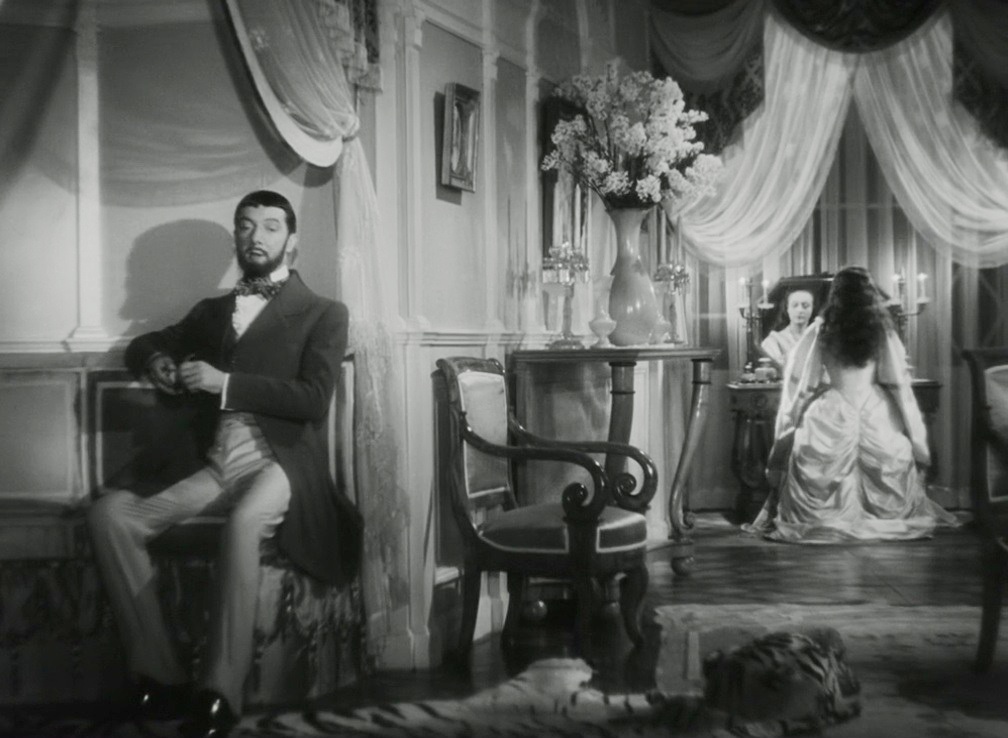
Carné uses the dialogue between mime and traditional acting to contemplate the nature of cinema itself circa 1945, the silent age still not that long in the past and the sound age now stiflingly dominant, when sophistication in filmmaking had, after its dizzy heights of visual expression in the late silent era, was by this point revolved almost entirely around capturing and filtering performance. Whilst likely more a by-product of shifting styles than deliberate, the brief depiction of Frédérick playing Othello is the least persuasive part of the movie, false and declamatory, compared to the fluid elegance and finesse of Baptiste’s art, which naturally holds the camera, and indeed compared to Frédérick’s comic bravura when tearing Les Auberges des Adrets to shreds. Carné’s camera is his actor’s body, author’s pen, infinitely dextrous but rarely in a loud way throughout: one crucial camera movement prefigures Lacenaire’s fateful drawing of the curtain as Carné tracks the camera away from Baptiste and Garance in an embrace on the Grand Theatre’s balcony to locate Lacenaire as he looks on from open doors and knowingly prepares his coup-de-theatre. More subtle but also used with powerful effect is the way Garance delivers her most famous dialogue in the film, telling the Comte about her persisting love for a man (whilst suppressing Baptiste’s name) whilst seated at a mirror, deliberately echoing her introduction whilst also noting the change in setting but not the changed demand of a beauty that can’t see beyond itself and its meaning to a man, in this case De Montray. But with the subversive inversion of meaning, as the mirror, as if anticipating Jean Cocteau, is her gateway to escape, to other selves and realms.

“You want the kind of love a poor man has,” Garance tells the Comte, who despite his affectation of unruffled savoir faire and equanimity is actually deeply jealous of Garance’s affections: Garance means love that has no strings and sustains itself without reference to worldly things, whereas her relationship with the Comte is one of transactions and sustained illusions of fidelity. “Leave the poor something,” she adds. The irony here is that Garance offers the Comte everything he wants, even the promise of publically attested passion and fidelity, without the actual strictures of marriage, except for the absence of a rival. It’s made clear that De Montray killed a young Scotsman in a duel when his jealousy was sparked, and he starts looking for a likely candidate for her unknown lover with the express desire to kill them too. Just as Frédérick and Baptiste mirror each-other in their talents and temperaments, the Comte and Lacenaire are strange doppelgangers, both intensely, murderously proud, projecting imperious veneers but driven by obsession. The fateful asymmetry is that Lacenaire doesn’t follow the same rules as the Comte, who needs to place his quarrels and enact them in affairs of honour, whereas Lacenaire settles his accounts more directly.

Lacenaire himself, when explaining his penchants in writing, notes that the difference between farce and tragedy is only one of social standing – a king suffering his wife’s infidelity is tragedy but a commoner experiencing it is farce, a comment he makes with barbed meaning to the Comte as he and some friendly aristocratic bullies try to force Frédérick into a duel after his success as Othello. The Comte and his pals first try to goad Frédérick by attacking Shakespeare as a maker of “bestial” drama in comments designed to evoke the characterisation of so much art by the Nazis as degenerate. Frédérick and Lacenaire form an unlikely yet effective ruck facing down the bullies, with layers of gamesmanship and slightly askew motives and the aspects of metatextual awareness accumulating at speed: Frédérick and Lemaitre sting the Comte back by using the thematics of the play to hint at his own anxiety over being cuckolded, and with all three men knowing what’s behind the confrontation to varying degrees – but only Lacenaire knows that Baptiste and Garance are having a desperate tryst on the balcony, a scene he unveils as the supreme flourish that completely breaks all barrier between art and life, tragedy and farce, according to his proclivities. Frédérick is dismayed that Lacenaire seems to have revealed Baptiste to the Comte, but Lacenaire already plainly has his own end in mind for the play – given as a special relish after the Comte compounds his indignities by having his cronies throw him bodily from the theatre. The next morning he goes to the Turkish bath the Comte frequents with Avril in tow, confronts the Comte, and stabs him to death.

The Comte’s assassination extends Carné’s eliding approach to the major moments of dramatic action, registering in two powerfull underplayed reactions – the first when De Montray sees who’s come to visit him, registering Lacenaire’s dandyish façade and lethal gaze for what they portend immediately. Carné’s camera dollies in on Avril’s face as he leans nonchalantly on the doorframe only to register the slaying with quiet shock, realising his boss has crossed a line in a manner he didn’t expect. Whilst Carné can’t possibly have seen them, this scene bears a fascinating resemblance to scenes in Fritz Lang’s Hollywood films of the wartime moment like Hangmen Also Die (1943) in the portrayal of slaughter enacted in quasi-public settings, and the similarity feels like it flows from some assimilated zone of experience, of fleeting moments of justice snatched at moments of opportunity through the fascist age. Carné leaves it to the audience imagination to conjure the picture of the Comte’s blood spurting all over the clean white tiles and clouding the bath water, and Lacenaire settles down to await his arrest, knowing well he cannot have engineered himself a better end to his career nor to the drama he’s been weaving, and playing in. Meanwhile Baptiste and Garance have stolen the moment of passion they failed in before, in what constitutes a restaging, back in the same room, played over again from epic moment of passion failed passion to epic moment of passion fulfilled, if in a way that knows its own sad fate – Garance intends to head off in the morning to forestall the Comte’s duel with Frédérick with a show of self-negating pleading.

The two are caught together in the morning by Nathalie, whose pathos finally, fully blooms, challenging Garance with a familiar litany of wife to mistress accusations, stating it must be easy to be the dream woman who hasn’t been living with Baptiste for years, to Garance’s simple but deeply loaded reply that she’s been living with his absence from her life. “And me, Baptiste?” she cries out as he chases after Garance, left a forlorn figure no because she couldn’t have the person she loved but because she did and it wasn’t enough. The filmmakers manage to do something rare with the emotional crescendos of this film’s ending, identifying the equal agonies of the three corners of this triangle. “You were right,” Baptiste coos to Garance when they finally get into bed together, “Love is so simple,” and in such moments indeed, but the rest of the time, watch out. Outside a Carnival is on and the denizens of the Boulevard du Crime are now dancing in madcap frenzy, all dressed up in white mime costumes in a craze seemingly inspired by Baptiste’s example. The contrast between the public joy and the emotional crescendos of pain and death for his characters is given a particular potency by the feeling Carné was undoubtedly anticipating the splendid frenzy of liberation here, whilst signalling awareness that would hardly be the end of history, only another of its gateways. Garance is taken away in her carriage to intervene in a duel that won’t happen, whilst Baptiste, still chasing, is buffeted by an oblivious crowd and by a gruffly crowing Jericho who wants to drag him back to the façade of domesticity. Baptiste breaks away from him but is lost amidst the churning humanity. It’s here that the title of the film’s second portion resolves in all its sardonic import – Baptiste, the mime, the artist who turns life into his fodder, is finally, the one real thing in a crowd turning his guise back at him, his heartbreak and desperate, even pathetic desire become a river infusing the city, the world, with all he’s given up to them. And down the curtain drops.
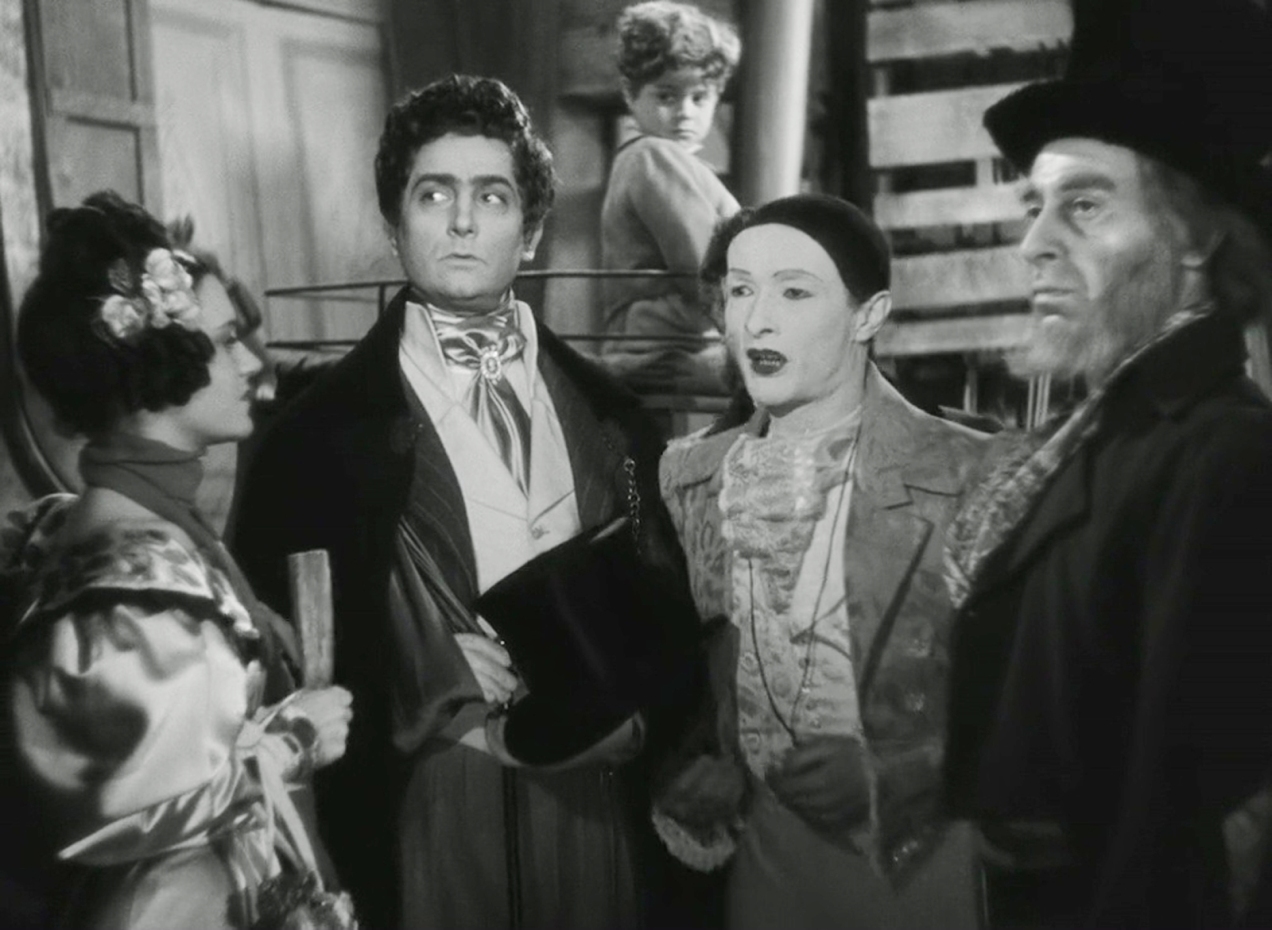
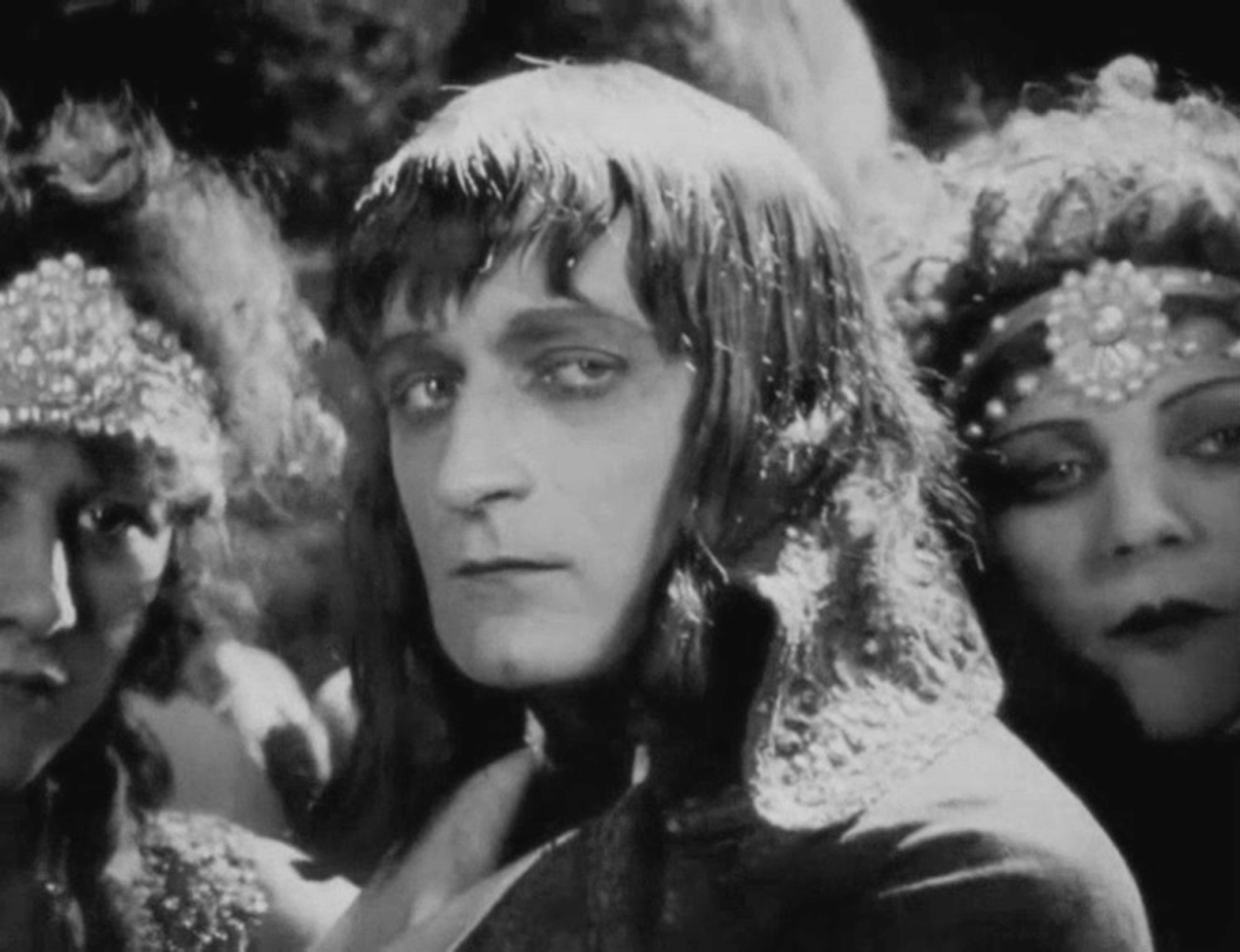































































































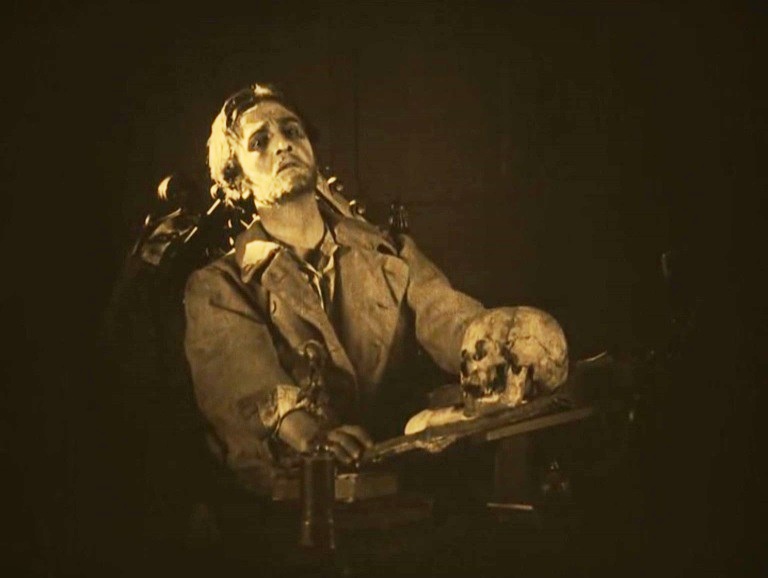










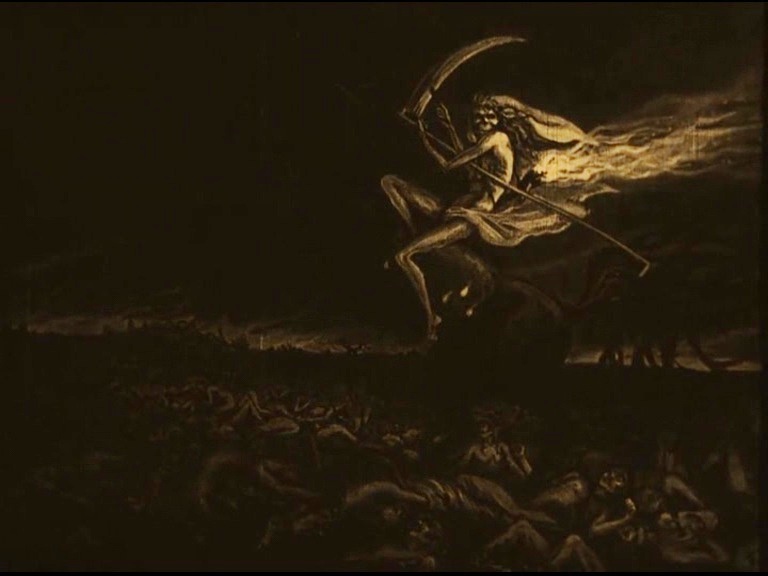















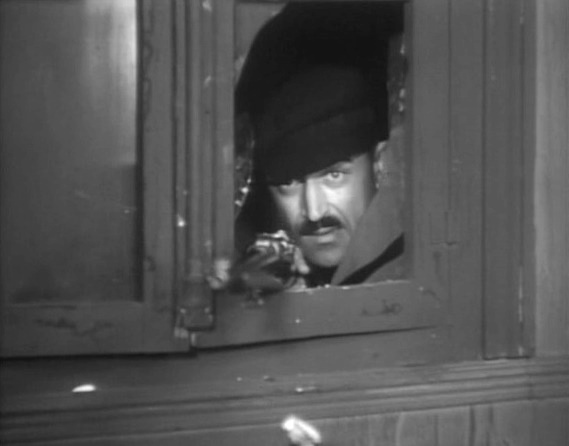










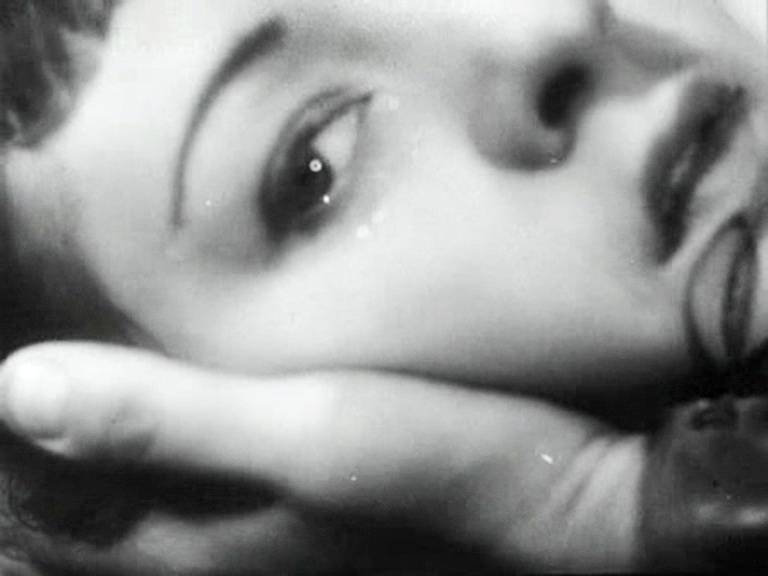






 >.
>.


